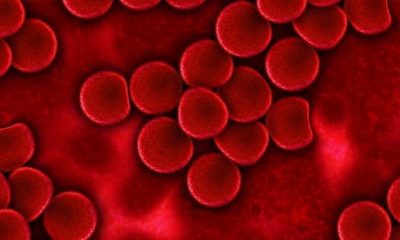Claudia Finkelstein, Michigan State University
It’s the moment we thought we were all waiting for…or is it?
We were cautiously optimistic about the end of the pandemic in view of increasing vaccine availability and decreasing case numbers after the peak in January.
Then, whether due to variants, pandemic fatigue or both, cases and case positivity began to increase again – throwing into question whether the end was as near as we thought. This is merely one of the most recent of the many reversals.
I am a physician and associate professor of medicine at Michigan State University’s College of Human Medicine. In my role as the director of wellness, resiliency and vulnerable populations, I speak with staff and faculty members who may need a sympathetic ear or may be struggling.
Amid the happiness and relief that people are feeling, I also see confusion and some fear. Some people are wary of going out again, and others are eager to throw a party. Some learned that they like being alone and do not want to stop nesting. I think this is all normal from a year of what I call the zigzag pandemic.
Change after change
Awareness of the novel coronavirus for most of us rose between January – when the first cases in China were reported – and March 11, 2020, when the World Health Organization officially declared a pandemic. Since the declaration, daily uncertainty and contradictory information has been the norm.
First, no masks were needed. Then you had to wear a mask. Hydroxychloroquine looked promising and got emergency use authorization, but that was revoked fairly quickly and officials said not only was there no benefit but there was some potential harm.
We were transiently afraid of groceries, packages and surfaces. Then data emerged that surfaces were not as dangerous as previously thought.
In the absence of a coordinated national policy, states began to fend for themselves, creating their own policies regarding shutdowns and masks.
Even now, there is state-by-state variability in which businesses may be open and at what capacity and whether masks are required, suggested or neither.
Both inevitable and avoidable factors played into the back-and-forth. Part of the whiplash is due to the “novel” part of the novel coronavirus, or SARS-CoV-2. This virus is new and many of its characteristics unknown, leading to policy revisions becoming necessary as more becomes known.
Part of the zigzag is due to the nature of clinical trials and the nature of the way scientific knowledge emerges. Learning about a new pathogen requires time and the willingness to challenge initial assumptions. Part is due to the lack of a reliable source of information trusted to act in our collective best interests and a lack of preparedness.
Given the reversals behind us and uncertainty ahead, we need to examine both individual and societal responses moving forward.
Different experiences
There is no question that all of our lives have changed. However, the ways in which they have changed has varied widely. The variation depends on our jobs – think of the differences for grocery store, tech and health care workers – our living situations, our underlying physical and mental health, our financial status and our personalities, just to begin with.
For example, some introverts have been fortunate enough to work remotely in comfortable clothes with broadband internet and no children to educate, while their extroverted colleagues have longed for more social connection. Their colleagues with young children and jobs that could not be done remotely have been scrambling. Many have hit the wall and find themselves adrift and unmotivated, while others have seemingly thrived doing long-postponed projects.
Nearly everyone has been affected in some way. A recent systematic review
concluded that the pandemic is associated with highly significant levels of psychological distress, particularly in certain higher-risk groups.
As individuals, what can help us get through this?
What we can do for ourselves
First, we can begin by making a fearless assessment of our current reality – the state of now. Sometimes making an actual list of our needs and assets can help us to prioritize next steps. Steps may be visiting a community health center, a virtual therapist, a job fair or even something as simple as carrying a printable wallet card with stress reduction tips.
What might work for you might not work for your spouse, partner or best friend. We need to be doing whatever is known to foster resilience in ourselves and our family members.
This includes making human connections, moving our bodies and learning to regulate our emotions. Looking back at how we handled past difficulties may help us. Mental health concerns have become more common, and evidence on overall impact of the pandemic on mental health is still being collected.
There has been increased public awareness about these issues, and telehealth has eased access for some seeking help. Our society – individuals as well as institutions – needs to continue to work to make it acceptable for people to get mental health care without worrying about stigma.
Deciding which of your normal activities you wish to resume and which to let go of helps you to prepare for the future. So does noting which new activities you’d like to hold on to. These lists potentially include attending family or sporting events, traveling, going to the gym or live worship. You may choose to continue to cook at home or work from home if you have the choice. Of course, all of these choices should be made in accordance with CDC guidelines.
And then there are things we may not want to do. That can include behaviors we learned about during the pandemic that don’t make us feel good or serve us well. That may include watching too much news, drinking too much alcohol and not getting enough sleep. And yes, maybe there are some relationships that need changing or reworking.
Then, we need to to think about what we can do on a level larger than the individual.
Societal and governmental changes
For many people, it feels futile to address individual resilience without addressing what feels like a rigged system.
The pandemic hit at a particularly politically polarized time and a particularly unprepared time. This was unfortunate, because fighting a common adversary – such as polio or a world war – can unite a population.
In contrast, the coronavirus was subject to multiple conflicting interpretations and even doubt about its severity. Rather than rallying together against the virus, our adherence to mandates became a surrogate for our political beliefs.
Now that longstanding inequities have been highlighted by differential infection, hospitalization and mortality rates by race, political and public health officials can begin a careful analysis of the gaps in health care coverage by race.
While examining how to effectively address longstanding disparities is crucial, so is being prepared for the next pandemic. A coordinated nonpartisan, science-based health infrastructure prepared to rapidly roll out emergency responses as well as consistent clear messaging would be vital. However, without a population willing to consider collective good ahead of individual freedom, we run the risk of repeating history.
![]()
Claudia Finkelstein, Associate Professor of Medicine, Michigan State University
This article is republished from The Conversation under a Creative Commons license. Read the original article.

















You must be logged in to post a comment Login